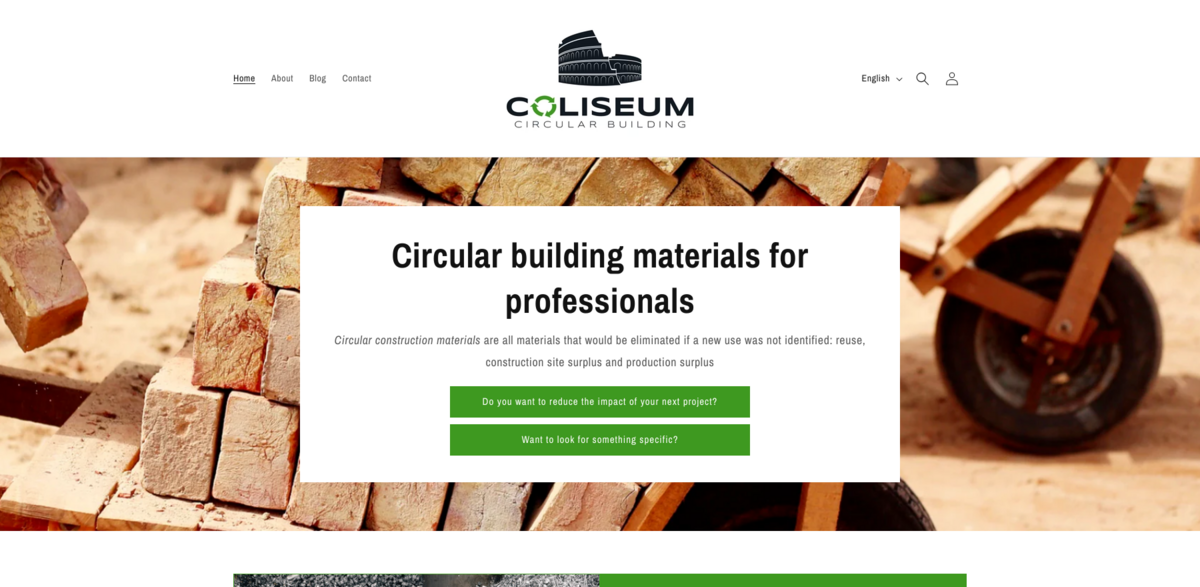What Are Circular Building Materials?
Circular building materials are basically all those materials that would otherwise be discarded if no new use was found for them. Think reuse, construction site surplus, and production leftovers. Instead of letting these materials go to waste, they get a second life in new projects. It’s a smart way to keep resources in play and out of landfills.
The Big Benefit: Reducing Environmental Impact
The construction sector is a major player when it comes to environmental impact. Here’s why it matters:
- Nearly 40% of global energy consumption comes from construction activities.
- It accounts for about 30% of CO2 emissions worldwide.
- Half of all materials extracted each year are used in construction.
- Almost a third of the waste produced globally is generated by this sector.
Using circular materials is a powerful way to limit the footprint of any construction project. It’s a win-win for the planet and the industry.
Why Choose Circular Materials?
There are several solid reasons to build with circular materials. First off, it helps improve the environmental impact of your business. By cutting down on waste and emissions, companies align their projects with their environmental strategies and meet stakeholder expectations. Plus, regulations are tightening up—think European taxonomy and other rules—so using circular materials keeps projects compliant now and in the future. And let’s not forget the cost side of things. Construction costs keep climbing, so adopting circular practices can help reduce expenses and diversify supply sources. Pretty smart, right?
Examples of Circular Materials Commonly Used
Wondering what kinds of materials are typically reused? Here are some examples that pop up regularly:
- Floors: Tiles, parquet, carpets, vinyls, paving stones, clinkers—you name it, inside and out.
- Insulation: Plates or rolls made from glass, wood, rock wool, or synthetic materials like PIR, PUR, and XPS.
- Wood: Structural elements like chevrons and battens, flooring, cladding, doors, and other joinery pieces.
- Facades: Cladding materials such as bricks, stones, metal, concrete, and masonry elements like tiles and Ytong.
- Sanitary: Sinks, taps, WCs, shower screens, and other bathroom fixtures.
How Does the Process Work?
Getting started with circular materials is pretty straightforward. It kicks off with a needs analysis—looking at your project’s specifics like quantities, price, quality, and timing. Then comes the research and validation phase, where materials are sourced from a vast catalog and concrete proposals are made, including all-in prices and deadlines. If needed, quality tests or certifications are done to make sure everything checks out. Finally, the execution and delivery step ensures materials arrive on site exactly when you want them. Plus, there’s an analysis of the CO2 impact of the whole operation. If dismantling or reconditioning is required, that’s handled too. Smooth and efficient.
Project Impact on Sustainable Development Goals (SDGs)
- SDG 11: Sustainable Cities and Communities – promoting sustainable construction practices.
- SDG 12: Responsible Consumption and Production – encouraging reuse and reducing waste.
- SDG 13: Climate Action – cutting down CO2 emissions through circular materials.
- SDG 9: Industry, Innovation, and Infrastructure – fostering innovative building solutions.
- SDG 15: Life on Land – reducing the extraction of raw materials and preserving natural habitats.
Why This Matters Now More Than Ever
The construction industry is at a crossroads. With environmental concerns mounting and regulations tightening, the shift toward circular materials isn’t just a trend—it’s becoming a necessity. Beyond compliance and cost savings, it’s about taking responsibility for the planet and future generations. Circular building materials offer a practical, impactful way to build smarter, greener, and more sustainably. So, if reducing your project’s footprint sounds good, circular materials might just be the way to go.





















